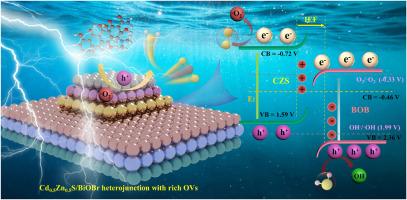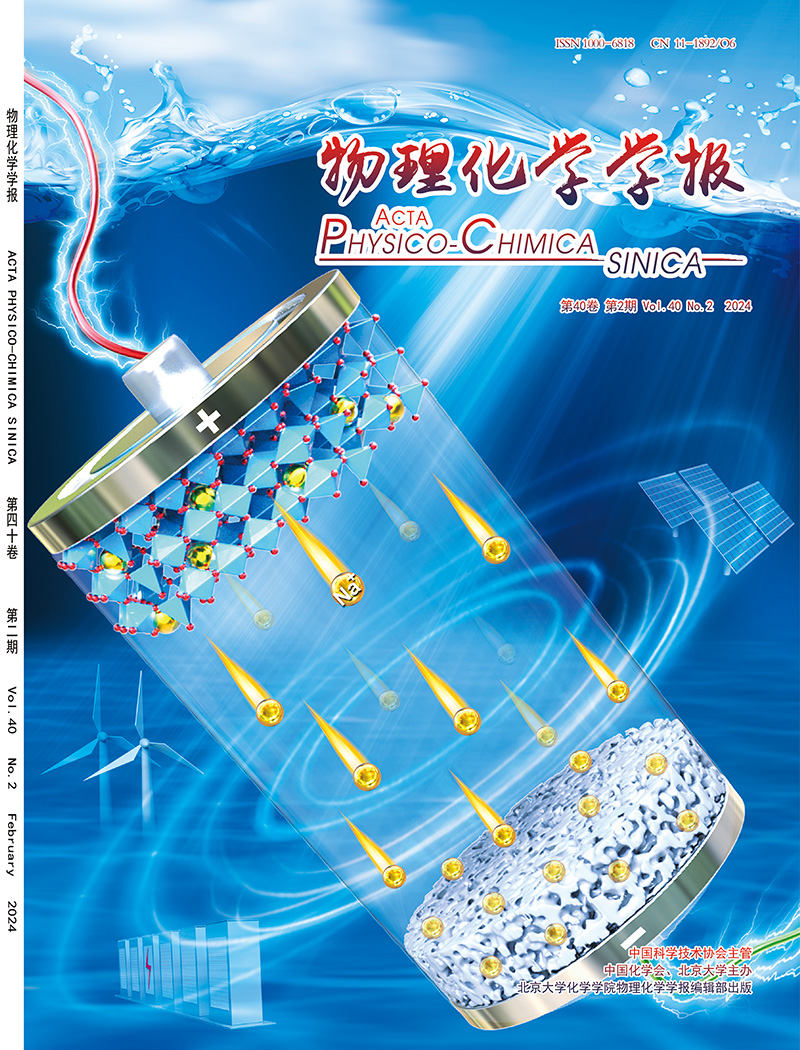Interfacial engineering of Cd0.5Zn0.5S/BiOBr S-scheme heterojunction with oxygen vacancies for effective photocatalytic antibiotic removal
IF 13.5
2区 化学
Q1 CHEMISTRY, PHYSICAL
引用次数: 0
Abstract
The construction of S-scheme heterojunction photocatalysts has emerged as a promising strategy to address the urgent need for efficient antibiotic wastewater remediation. However, persistent challenges in achieving interfacial intimacy and precise charge transfer regulation between semiconductors have hindered their practical implementation. In this work, we engineered a hierarchical Cd0.5Zn0.5S/BiOBr S-scheme heterojunction via a controlled solvothermal synthesis, where BiOBr microspheres serve as the core, and Cd0.5Zn0.5S nanoparticles form a conformal shell. This architecture ensures maximal interfacial contact and directional charge dynamics, critical for optimizing photocatalytic efficiency. The optimized heterojunction exhibits superior catalytic performance, achieving tetracycline (TC) degradation rate constants 3.3- and 1.6-fold greater than pristine BiOBr and Cd0.5Zn0.5S, respectively. This enhancement stems from the synergistic interplay of efficient charge separation and preserved redox capacities inherent to the S-scheme mechanism. Furthermore, the TC degradation process and mechanism were elucidated. This study provides a new perspective on developing defective S-scheme heterojunctions for antibiotic wastewater purification with high performance.

含氧空位的Cd0.5Zn0.5S/BiOBr S-scheme异质结光催化抗生素去除的界面工程
构建s型异质结光催化剂是解决抗生素废水高效修复迫切需要的一种有前景的策略。然而,在实现半导体之间的界面亲密性和精确的电荷转移调节方面的持续挑战阻碍了它们的实际实施。在这项工作中,我们通过控制溶剂热合成设计了层次化的Cd0.5Zn0.5S/BiOBr s方案异质结,其中BiOBr微球作为核心,Cd0.5Zn0.5S纳米颗粒形成保形壳。这种结构确保了最大的界面接触和定向电荷动力学,这对优化光催化效率至关重要。优化后的异质结表现出优异的催化性能,其对四环素(TC)的降解速率常数分别是原始BiOBr和Cd0.5Zn0.5S的3.3倍和1.6倍。这种增强源于有效的电荷分离和S-scheme机制固有的氧化还原能力的协同相互作用。并对TC的降解过程和机理进行了研究。该研究为开发具有缺陷的s型异质结提供了一个新的视角,用于抗菌废水的高效净化。
本文章由计算机程序翻译,如有差异,请以英文原文为准。
求助全文
约1分钟内获得全文
求助全文

 求助内容:
求助内容: 应助结果提醒方式:
应助结果提醒方式:


